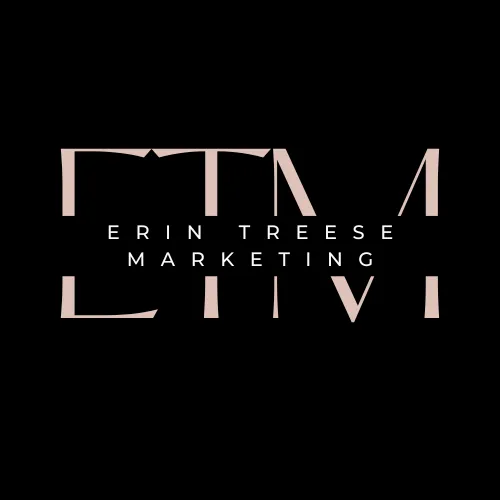Read The Blog!

Mastering Follow-Up Strategies for Local Business Leads
“Success is not final; failure is not fatal: it is the courage to continue that counts.” – Winston Churchill
Introduction:
If you don't follow up you're leaving a lot of money on the table. I get it. Your busy. You don't want to come across as pushy or salesy.
To be fair I'm not the best at this so I put a lot of automation in place to do it for me. I even dedicate time every week to improving my follow-up automations because you build it once and it's done. Keep reading friends.
Also, since I've had a migraine almost every day for the last 2 weeks, I only made one pretty picture.
Reach out until they tell you to go away.
Don't get discouraged. People are busy.
When following up with leads for local small business owners, it's important to keep in mind that people are busy. They may not always respond to your initial attempts to reach out, but that doesn't mean they aren't interested. Don't get discouraged if you don't receive a response right away. Persistence is key in the follow-up process.
Remember that what ever type of customer you work with, they have a lot on their plate and may need multiple reminders before they have the time to respond. Keep calling, texting, and emailing until you receive a clear indication that they are not interested or want you to stop contacting them. Be respectful and professional in your follow-up communications, but don't give up too easily.
Crafting Personalized Follow-Up Messages
One effective strategy for following up with local business leads is to craft personalized messages. Generic, cookie-cutter messages are less likely to grab the attention of busy business owners. Instead, take the time to research and understand their specific needs and challenges. Use this information to tailor your follow-up messages and demonstrate that you have a genuine interest in helping their business succeed.
Personalization can include referencing a specific aspect of their business in your message, highlighting a pain point they may be experiencing, or offering a solution that is tailored to their industry. By showing that you have taken the time to understand their unique situation, you increase the likelihood of receiving a response and building a meaningful connection.
Use Automation Tools for Efficient Follow-Ups
To streamline your follow-up process and maximize efficiency, consider using automation tools. These tools can help you automate repetitive tasks such as sending follow-up emails or scheduling follow-up calls. By automating these tasks, you free up more time to focus on building relationships with leads and providing personalized attention.
Automation tools can also help you stay organized by tracking the status of each lead and reminding you when it's time to follow up. This ensures that no leads slip through the cracks and helps you maintain a consistent follow-up schedule. However, it's important to remember that while automation tools can be helpful, they should not replace the human touch. Personalized communication is still key to building trust and rapport with leads.
Implementing a Multi-Channel Follow-Up Approach
When following up with leads, it's important to utilize a multi-channel approach. This means reaching out to leads through various channels such as phone calls, text messages, social and emails. By diversifying your communication channels, you increase the chances of getting a response and staying top-of-mind with your leads.
Different leads may prefer different communication methods, so it's important to cater to their preferences. Some may be more responsive to phone calls, while others may prefer email or text messages. By using multiple channels, you can meet them where they are most comfortable and increase the likelihood of engagement.
Additionally, a multi-channel approach helps you stand out from competitors who may only rely on one or two communication methods. By being persistent and using multiple channels, you demonstrate your commitment to providing exceptional customer service and make it easier for leads to respond in their preferred way.
Tracking and Analyzing Follow-Up Metrics
To optimize your follow-up strategies, it's important to track and analyze follow-up metrics. This allows you to identify what's working and what can be improved upon. By measuring key metrics such as response rates, conversion rates, and engagement levels, you can make data-driven decisions to refine your approach.
Tracking metrics can help you identify patterns or trends in your follow-up efforts. For example, you may notice that certain types of personalized messages receive higher response rates, or that a specific channel is more effective for reaching certain leads. By understanding these insights, you can adjust your follow-up strategies accordingly and increase your chances of success.
Regularly reviewing and analyzing follow-up metrics also helps you identify areas for improvement. It allows you to identify any bottlenecks or inefficiencies in your follow-up process and make necessary adjustments. By continuously optimizing your follow-up strategies, you can maximize your conversion rates and ultimately boost your sales.
Engaging Leads with Valuable Content
One effective way to engage leads during the follow-up process is by providing them with valuable content. This can include educational blog posts, industry reports, case studies, or helpful resources that address their pain points or provide solutions to their challenges.
By sharing valuable content, you position yourself as a trusted advisor and expert in your industry. It demonstrates your knowledge and expertise, and helps build credibility with leads. Additionally, providing valuable content can keep leads engaged and interested in your business, even if they are not yet ready to make a purchase.
When sharing content, make sure it is relevant to the lead's specific needs and interests. Personalize your recommendations based on their industry or the challenges they are facing. By providing content that is tailored to their unique situation, you increase the likelihood of capturing their attention and establishing a long-term relationship.
Blog action checklist:
Here is a quick checklist to get you started with following up. Remember imperfect action beats inaction, get started and keep publishing.
Persistence is Key:
Reach out until they explicitly tell you to stop contacting them.
Don't get discouraged by initial non-responses; people are busy.
Craft Personalized Messages:
Research and understand the lead's specific needs and challenges.
Tailor your follow-up messages accordingly to demonstrate genuine interest.
Utilize Automation Tools:
Implement automation tools to streamline repetitive tasks like follow-up emails or calls.
Use tools to stay organized and maintain a consistent follow-up schedule.
Adopt a Multi-Channel Approach:
Utilize various communication channels such as phone calls, text messages, social media, and emails.
Cater to the lead's preferences to increase engagement.
Track and Analyze Metrics:
Measure key metrics like response rates, conversion rates, and engagement levels.
Use data to identify trends and areas for improvement in your follow-up strategies.
Provide Valuable Content:
Share educational blog posts, industry reports, or case studies relevant to the lead's needs.
Position yourself as a trusted advisor by offering solutions to their challenges.







